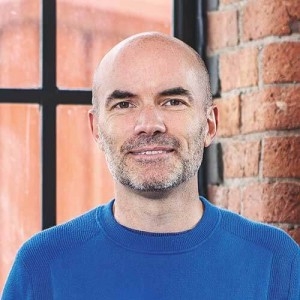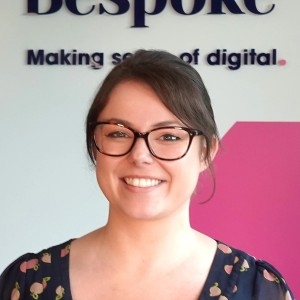
5 minutes
The real value of your website kicks in after it goes live.
In this video, Steve & Lauren reveal how to transform your website into a lead-generation machine.
From targeting high-intent keywords to applying the 7-11-4 rule for nurturing leads, they break down the 3 strategies that turn visitors into customers.
Drawing on years of experience and thousands of leads generated, these are the key things you can do to make your website perform like a salesperson.
Steve: So Lauren, I'm curious how many leads you've seen in the time that you've been working on campaigns with us. I don't know the number, but is it in the hundreds or the thousands?
Lauren: Thousands. You know what? I actually do have a number for this. So of the projects that I've been involved in, there's been over 6,000 leads generated from those in 2024 alone.
Steve: And for the group here maybe, I don't know, it's in tens of thousands, isn't it? For some people it's a small number, isn't it? Because, I mean, what do we, we only handle, for ourselves we only look for, well it's 20 leads a month actually. But some people are looking for hundreds, aren't they?
Lauren: Definitely, it's all relative to each business.
Steve: So can we look at some specifics of how we generate these?
Lauren: When you're building your website, you are looking for keywords that indicate that people want what you offer.
Steve: And we build the sections around those keywords - high-intent keywords. And we might build paid campaigns around them as well.
Lauren: Yeah so it's important to get it right organically and then once you've done that, there might be more opportunity for paid search. Paid search is great to capture those people very quickly who are looking for your service, but your website also has to be built so that lead magnets are easy to find, easy to navigate. Because there's no point in having, you know, a really great white paper on your website to download if it's too big and it's slowing down your website. So there's lots of little things.
Steve: Or the wrong title. Did you have an example actually? You had a case, didn't you, was it about the title of the lead magnet? Or was it about the design? I can't remember.
Lauren: It was the title of the lead magnet. So actually what had happened, we'd built a website for a client and everything looked great. And we set up a campaign on LinkedIn and we knew that 100% of the people in the targeting were potential customers. We knew that the bidding strategy was right, we tested that and then what we realised when we weren't getting any leads, was actually it's the creative. So what we did, we tested 15 different variants and we managed to pinpoint the exact title of the lead magnet that caused people to convert. So we went from having zero leads over a couple weeks to a lot of leads very quickly.
Steve: So ok, we've built a website around high-intent terms, people that are interested, they're in the market. We've got lead magnets in place which are giving us signals of interest in addition to the enquiries that are coming in, so we're building up, maybe you know, there's a number of enquiries. But then for each one of those, there might be three signals of interest, then if we're gathering signals of interest, what we hope is that over time, they funnel into becoming enquiries.
Lauren: So with your signals, it's really important that you nurture them. In the particular example that I was talking about earlier with that client, at first when the leads started to come in, there was a manual process and actually what we found was that wasn't suited for the amount of leads coming in. So we changed that to an automated process and what that meant was, that the signal was getting more touch points with the client and getting more engagement from them. They were able to increase the chances of them converting into a full lead down the line and that's what we found because, just from going from downloading the white paper, it takes time to actually become a lead. The strategy that we use that we talk about a lot is the 7-11-4.
Steve: Yeah this is Google’s study of if somebody's going to make a purchase decision, then they're going to have consumed a certain amount of content before they do that. So seven hours of content in total, it's the average, on eleven different occasions and across four different channels.
Lauren: Exactly, and that is exactly what needs to happen. So rather than just getting someone to make a signal, you can set up retargeting campaigns so you're capturing them on different platforms as well, and then that builds up your credibility as a service provider and makes them more likely to want to choose you.
Steve: And it just means that the website sits there, but it's you know, it's actually delivering a big result because it's got those things around it. If we just built the website, it would be a much less significant result.
Lauren: Definitely, and that's the thing that we've really got to remember, that when you build a website, it doesn't just get built and then it sits there and that's it. It's what you plug in afterwards that makes it the most impactful and work like a salesperson in your business.
Steve: And this is why you are seeing the thousands of leads, you’ve got the explanation.

